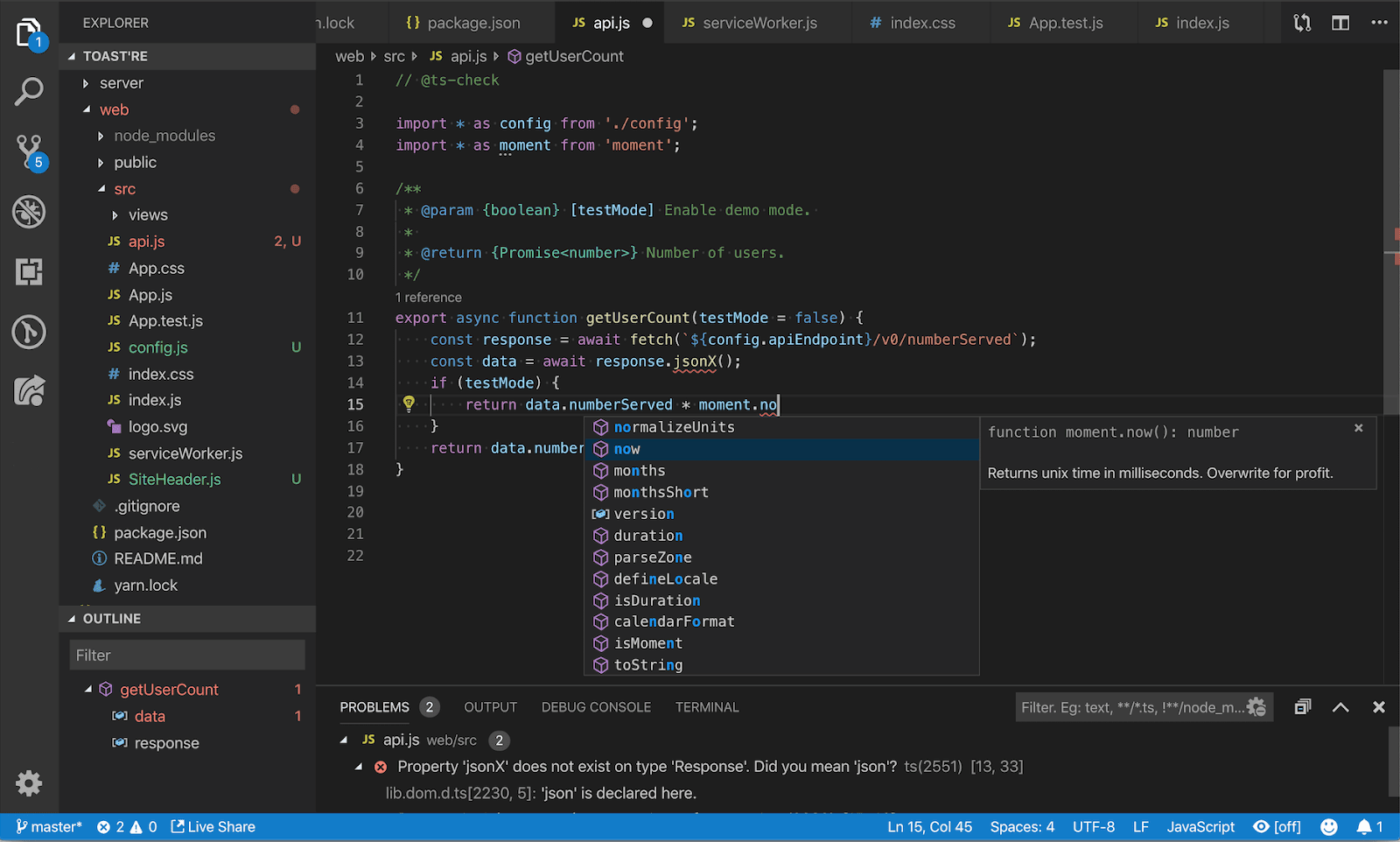Building software is no small feat. From writing code and debugging errors to managing projects and ensuring seamless collaboration, software development demands precision and focus at every stage.
A single misstep—flawed code, poor version control, or inefficient workflows—can derail the entire software development process.
Advanced tools with intuitive interfaces, version control systems, and automated testing features streamline your workflows, ensure code quality, and boost team collaboration.
In this post, we’ll explore the 18 best software development tools of 2025 to enhance your projects, from web development to agile management. Read on! 🚀
Key Insight: The software development market is projected to reach $1039 million by 2027.
⏰ 60-Second Summary
Here’s a quick overview of the best software development tools:
- ClickUp: Best for software project management, collaboration, and workflow automation
- Jira: Best for agile project management and tracking
- Microsoft Azure: Best for AI and machine learning solutions
- Docker: Best for running apps on multiple systems
- GitHub: Best for version control and code collaboration
- Jenkins: Best for customizing CI/CD processes with plugins
- Eclipse: Best for identifying errors and debugging code
- Kubernetes: Best for implementing microservices architectures
- Postman: Best for designing and testing RESTful APIs
- Visual Studio Code: Best for writing code in multiple programming languages
- IntelliJ IDEA: Best for developing Java and Kotlin applications
- Slack: Best for centralizing project-related discussions
- Trello: Best for streamlined task management
- Zapier: Best for automating repetitive tasks
- Dreamweaver: Best for designing visually appealing websites
- Apache NetBeans: Best for enhancing your development workflow
- Codenvy: Best for collaborative coding platforms
- Cloud9: Best for working on collaborative development environments
- What Should You Look for in Software Development Tools?
- The 18 Best Software Development Tools to Explore
- 1. ClickUp (Best for software project management, collaboration and workflow automation)
- 2. Jira (Best for agile project management and tracking)
- 3. Microsoft Azure (Best for AI and machine learning solutions)
- 4. Docker (Best for running apps in multiple systems)
- 5. GitHub (Best for Version control and code collaboration)
- 6. Jenkins (Best for Customizing CI/CD processes with plugins)
- 7. Eclipse (Best for identifying errors and debugging code)
- 8. Kubernetes (Best for implementing microservices architectures)
- 9. Postman (Best for designing and testing RESTful APIs)
- 10. Visual Studio Code (Best for writing code in multiple programming languages)
- 11. IntelliJ IDEA (Best for developing Java and Kotlin applications)
- 12. Slack (Best for centralizing project-related discussions)
- 13. Trello (Best for streamlined task management)
- 14. Zapier (Best for automating repetitive tasks)
- 15. Dreamweaver (Best for designing visually appealing websites)
- 16. Apache NetBeans (Best for enhancing your development workflow)
- 17. Codenvy (Best for collaborative coding platforms)
- 18. Cloud9 (Best for working on collaborative development environments)
- Special mentions
- Streamline Your Software Development Workflows with ClickUp!
What Should You Look for in Software Development Tools?
When selecting software development tools, focus on features that improve efficiency, simplify collaboration, enhance code quality, and support seamless project management.
Here are some critical features to prioritize:
- Integrated development environment (IDE): Choose debugging and testing tools with built-in editors, debugging capabilities, and smart code completion to speed up your development process
- Version control systems: Opt for software programming tools that track changes and enable multiple developers to collaborate without version conflicts
- Support for multiple programming languages: Look for development tools compatible with various programming languages to handle diverse projects
- Automated testing: Use tools that enable developers to run tests during development, ensuring code quality and reducing errors
- Collaboration tools: Pick platforms with team collaboration features like shared workspaces, real-time comments, and file sharing to improve teamwork
- Project management integration: Go for development tools that combine agile project management functionalities like task assignments, progress tracking, and agile workflows
🔎 Did you know? The very first computer “bug” wasn’t a glitch in the code but an actual insect! 🐜 In 1947, at Harvard University, a real moth got stuck in the relay of the Mark II computer, causing it to malfunction. This bizarre incident is where the term “bug” for a software error was born!
The 18 Best Software Development Tools to Explore
Here are 18 tools that optimize workflows and empower software development teams to build and deliver exceptional products:
1. ClickUp (Best for software project management, collaboration and workflow automation)
As the everything app for work, ClickUp is designed to optimize software development and project management workflows.
Whether it’s managing tasks, collaborating with teammates, or automating processes, ClickUp serves as a central hub that adapts to the specific needs of software developers. Its versatility has made it a go-to tool for development teams, helping them streamline operations, enhance collaboration, and accelerate project delivery.
ClickUp’s Software Development Tool centralizes all your workflows—task tracking, product roadmaps, bug reporting, and more—into one intuitive platform. This means teams can easily track tasks, manage timelines, and collaborate on code in real time.
💡 Pro Tip: Are you struggling to overcome common software development challenges? Here are five actionable strategies to tackle the toughest challenges:
- Dedicate time for training and certifications to keep pace with evolving technologies 💻
- Use agile methodologies to adapt to changing requirements effectively 🔄
- Define clear quality benchmarks and perform continuous testing for superior output 🧪
- Leverage communication tools and foster a culture of teamwork to avoid silos 🤝
- Integrate security protocols early in development to ensure a robust infrastructure 🔐
ClickUp Agile Software Development tool offers features that cater to Scrum, Kanban, and hybrid workflows, enabling software teams to easily manage sprints, backlogs, and product roadmaps.
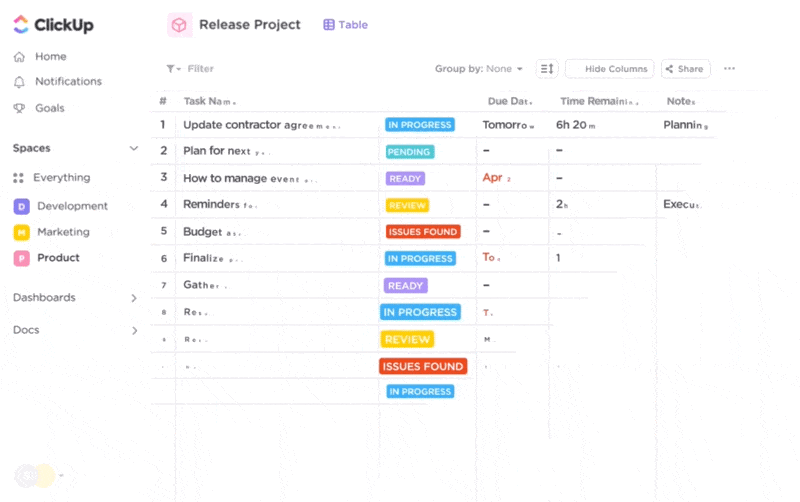
ClickUp’s Kanban Board View helps teams track the status of tasks across development stages, while the Timeline view makes it easy to spot and resolve dependencies before they become bottlenecks.
Additionally, with ClickUp’s Sprint Tool, you can simplify sprint planning with multiple features. Sprint points help with workload management, burndown charts for tracking progress, and automatic spillover of unfinished tasks to the next sprint.
ClickUp also provides customizable templates, making it easy to adjust workflows to fit your team’s needs and simplify your development process.
For example, the ClickUp Software Development Template optimizes workflows across various stages of the software development lifecycle. Whether you’re building a Product Roadmap, tracking features, or fixing bugs using Agile Scrum or Kanban, this template keeps everything organized in one place.
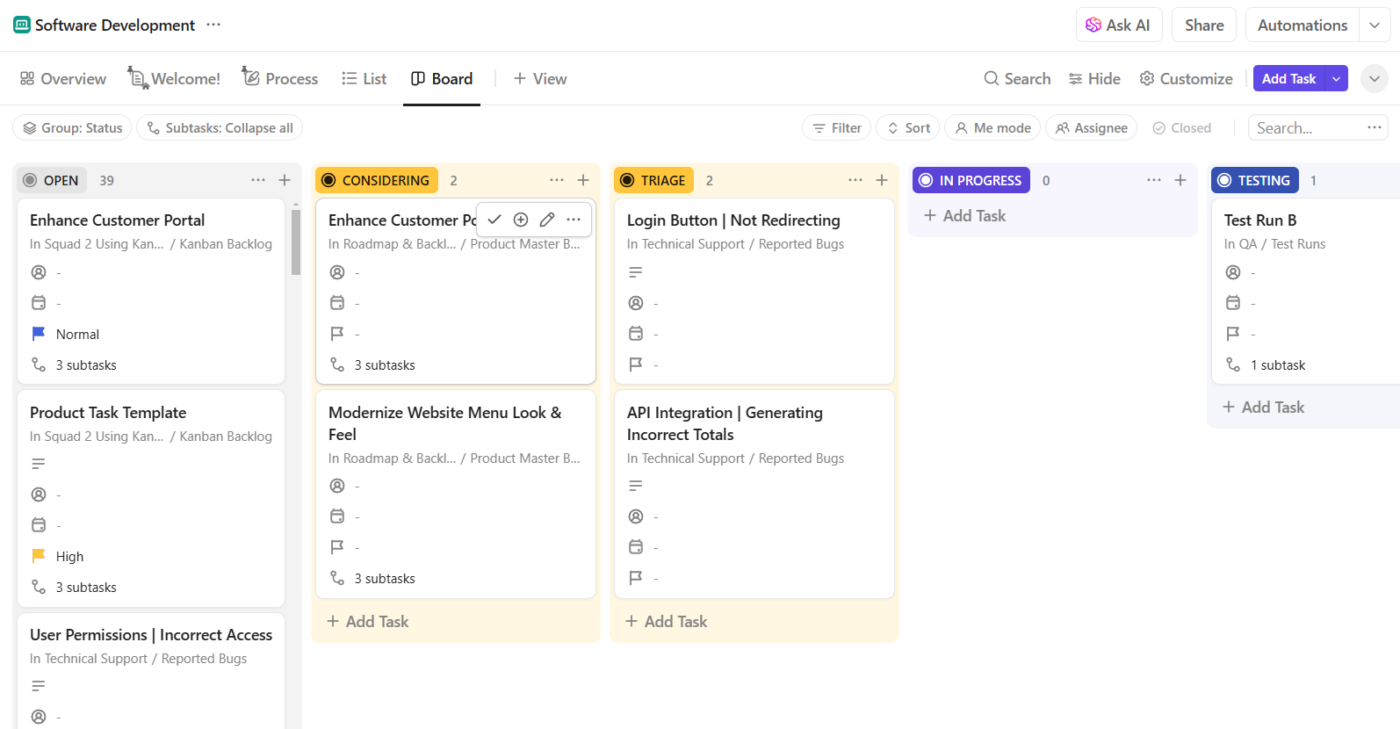
Why you’ll like it:
- Manage sprint cycles, feature rollouts, and bug fixes in one place
- Reduce manual updates with sprint automation and backlog management
- Mark tasks as Ready for Deployment and manage releases efficiently
Ideal for: Tech companies, startups, and enterprise development teams managing software projects, sprint cycles, product roadmaps, and quality assurance workflows.
ClickUp best features
- Break down complex software development project tasks, assign responsibilities, set deadlines, and track progress with ClickUp Tasks
- Track sprint points, automate spillover tasks, and visualize burndown charts with ClickUp Sprints
- Create, edit, and share software design documents in real-time with ClickUp Docs
- Discuss project updates, share files, and resolve issues instantly with ClickUp Chat
- Create agile-friendly views for sprint reports, velocity tracking, and team productivity with ClickUp Dashboards
ClickUp limitations
- ClickUp’s mobile app may lack some advanced features that are accessible on the desktop version
- It has an extensive feature set, requiring some learning curve for non-tech-savvy users
➡️ Also Read: Free Software Development Plan Templates
ClickUp pricing
ClickUp ratings and reviews
- G2: 4.7/5 (10,000+ reviews)
- Capterra: 4.6/5 (4,000+ reviews)
Here’s what a G2 review has to say about ClickUp:
2. Jira (Best for agile project management and tracking)
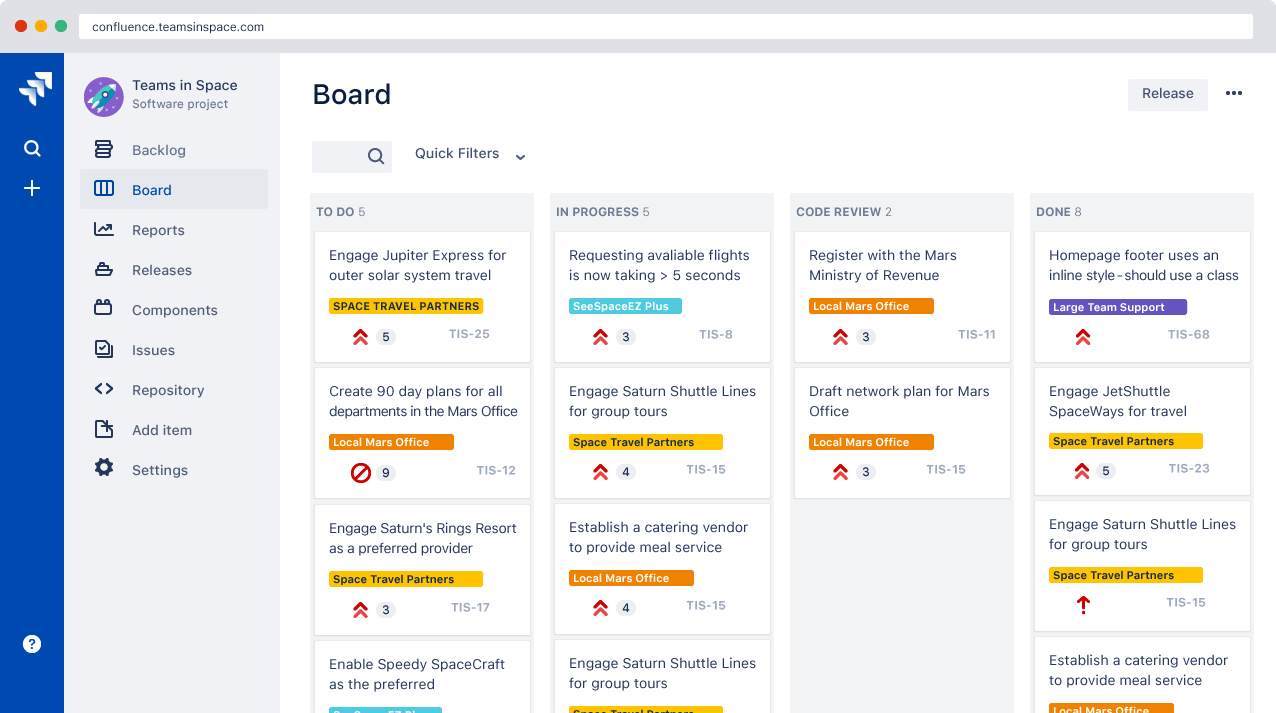
Jira, by Atlassian, is renowned for its customizable workflows, allowing you to tailor processes to fit your team’s needs. With features like Scrum and Kanban boards, you can visualize tasks and monitor progress in real-time.
Developers and project managers use Jira to report and resolve bugs, enhance collaboration, assign tasks, and ensure timely delivery.
Jira best features
- Visualize tasks and monitor progress using Scrum and Kanban boards
- Report and resolve bugs efficiently to keep projects on course
- Access real-time insights into your team’s performance
Jira limitations
- Users have reported its UI to be clunky after the update
- Jira can be expensive to use, especially when scaling
Jira pricing
- Free forever
- Standard: $7.53/month per user
- Premium: $13.53/month per user
- Enterprise: Custom pricing
Jira ratings and reviews
- G2: 4.3/5 (6000+ reviews)
- Capterra: 4.4/5 (15000+ reviews)
➡️ Read More: Agile Software Development Life Cycle (Ultimate Guide)
3. Microsoft Azure (Best for AI and machine learning solutions)
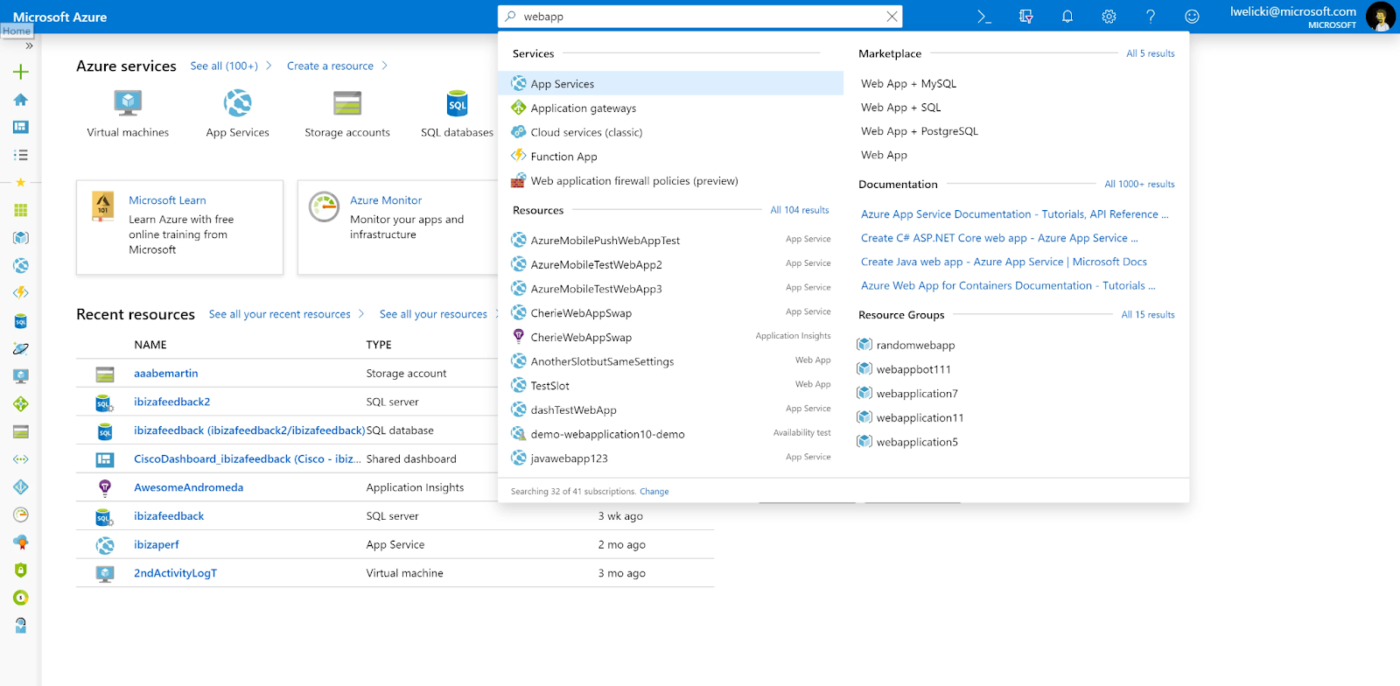
Microsoft Azure is best for virtual machines, databases, and AI capabilities. It has everything you need to build and run apps in the cloud, from simple websites to complex AI projects.
For instance, you might use Azure’s AI services to add image recognition features to your app, enhancing the user experience.
Microsoft Azure best features
- Deploy applications across multiple data centers worldwide
- Benefit from advanced security features and compliance certifications
- Seamlessly connect with other Microsoft products and services
Microsoft Azure limitations
- The pay-as-you-go model can be challenging to manage without careful planning
- Users have reported multiple downtimes affecting their accessibility
Microsoft Azure pricing
- Custom pricing
Microsoft Azure ratings and reviews
- G2: 4.4/5 (2000+ reviews)
- Capterra: 4.6/5 (1800+ reviews)
Let’s see what a Capterra review has to say about Microsoft Azure:
4. Docker (Best for running apps in multiple systems)
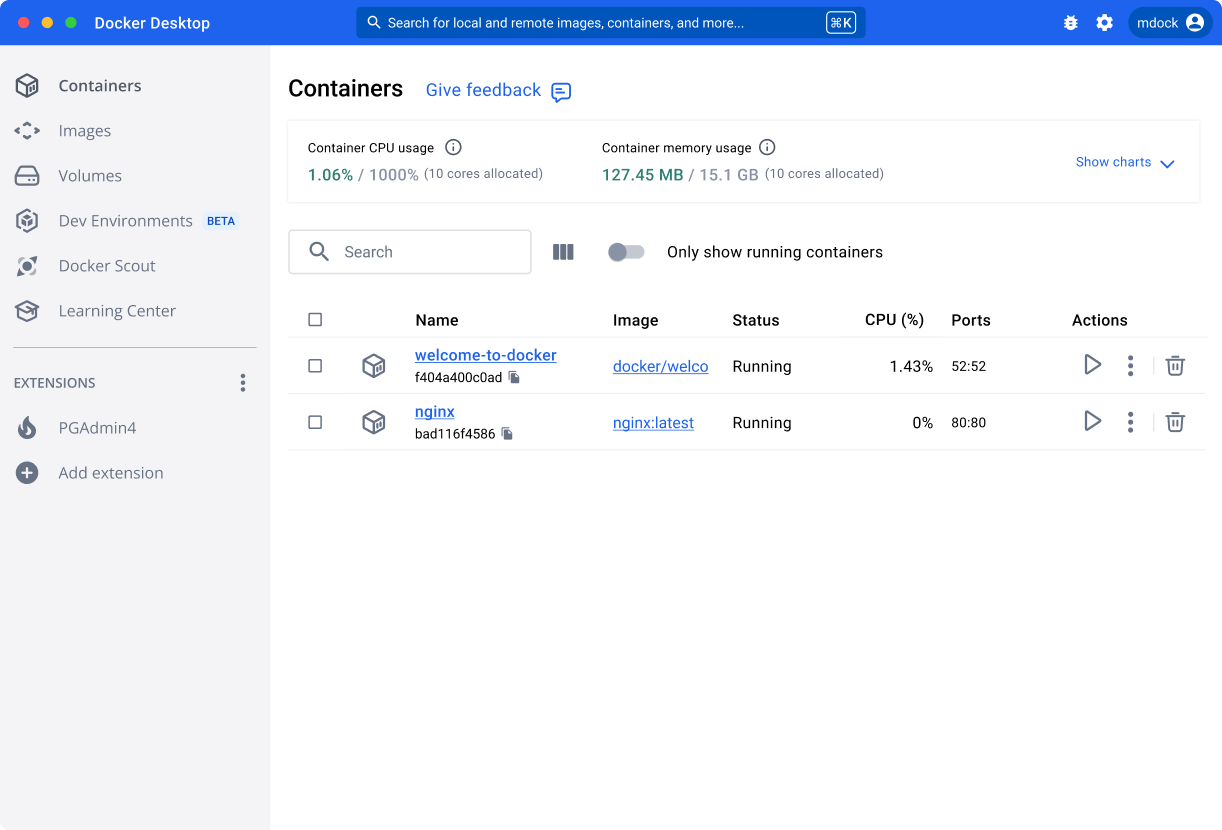
Docker is a software development platform that enables you to develop, ship, and run applications inside containers. It streamlines the deployment process, allowing applications to run seamlessly on various systems.
Docker allows you to containerize a web application to ensure it runs the same on your local machine as it does in production, reducing the “it works on my machine” problem.
Docker best features
- Package applications with dependencies for consistent environments
- Deploy containers across various platforms without modification
- Access high level of isolation between applications and their dependencies
Docker limitations
- Docker can use extra resources, which can impact system performance
- It has issues with memory usage, auto-starting, and directory bind-mounting
Docker pricing
- Free forever
- Docker Pro: $11/month per user
- Docker Team: $16/month per user
- Docker Business: $24/month per user
- Enterprise: Custom pricing
Docker ratings and reviews
- G2: 4.6/5 (230+ reviews)
- Capterra: 4.6/5 (530+ reviews)
➡️ Also Read: The 7 Lean Principles To Help Your Software Development
5. GitHub (Best for Version control and code collaboration)
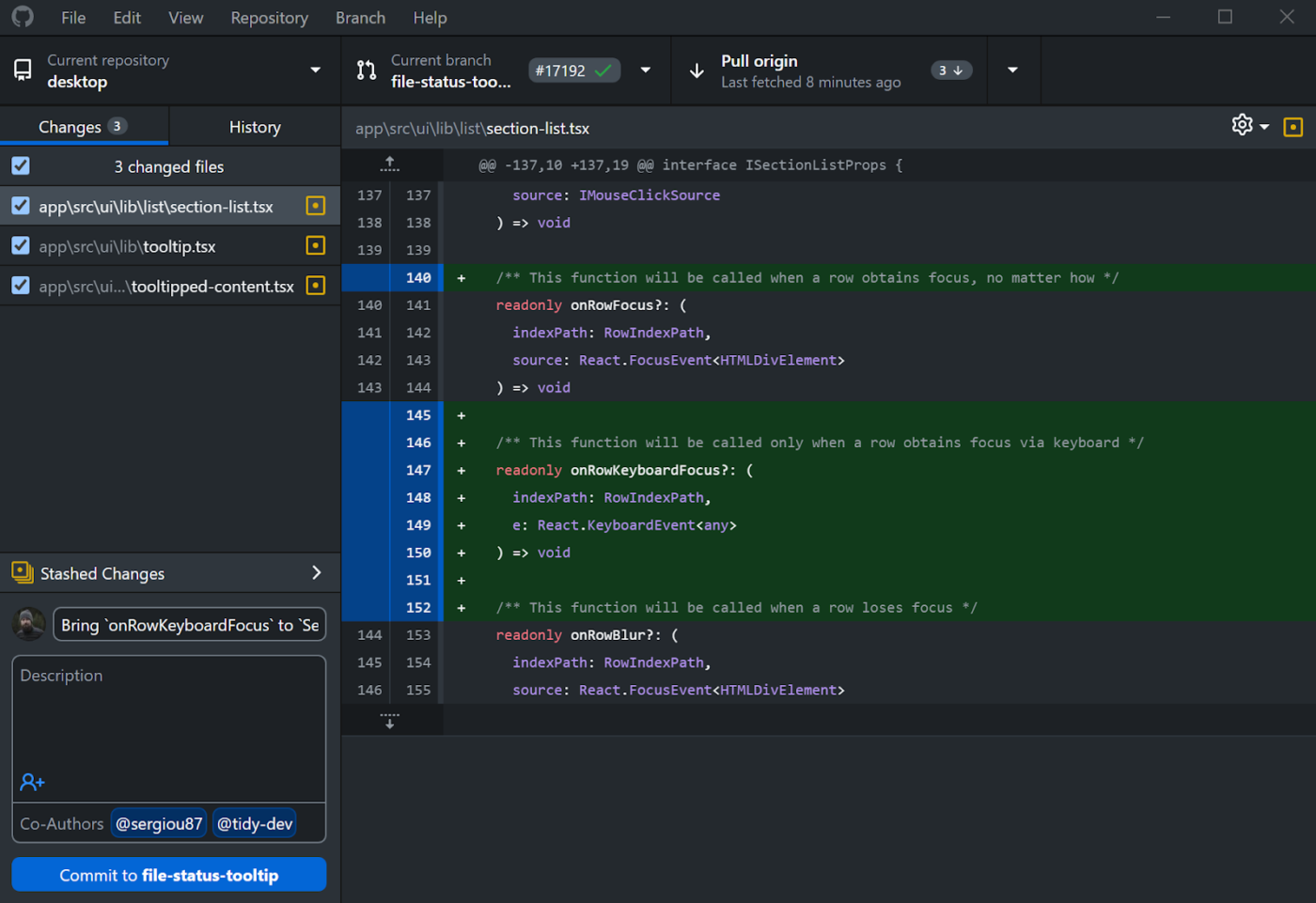
GitHub is a platform for developers to host and share code, collaborate on software development projects, and track changes. Its powerful version control system lets you easily revert to previous code versions.
Features like pull requests and code reviews foster teamwork and improve code quality. You can also use GitHub to manage tasks, track bugs, and keep your projects organized.
➡️ Read More: A Day in the Life of a Software Developer
GitHub best features
- Track changes and revert to previous code versions
- Manage bugs and feature requests of software projects efficiently
- Organize tasks and milestones within your repositories
GitHub limitations
- Frequent branching and merging can lead to merge conflicts
- Since it is an open platform, it’s susceptible to spam and malicious code injections
GitHub pricing
- Free forever
- Team: $4/month per user
- Enterprise: Custom pricing
GitHub ratings and reviews
- G2: 4.7/5 (2000+ reviews)
- Capterra: 4.8/5 (6000+ reviews)
Here’s what a Capterra review has to say about GitHub:
6. Jenkins (Best for Customizing CI/CD processes with plugins)

Jenkins is an open-source automation server that helps you automate parts of your software development process, such as building, testing, and deploying code. It allows you to set up continuous integration and delivery (CI/CD) pipelines, ensuring your code is always in a deployable state.
Jenkins best features
- Define your CI/CD pipelines using code for versioning and reuse
- Run builds across multiple machines to speed up the process
- Access a large community for plugins, support, and best practices
Jenkins limitations
- Its interface can feel dated and less intuitive compared to newer tools
- Some plugins may not work well together or with newer versions of Jenkins
Jenkins pricing
- Free forever
Jenkins ratings and reviews
- G2: 4.4/5 (500+ reviews)
- Capterra: 4.5/5 (560+ reviews)
➡️ Read More: Continuous Deployment Tools for Software Teams
7. Eclipse (Best for identifying errors and debugging code)
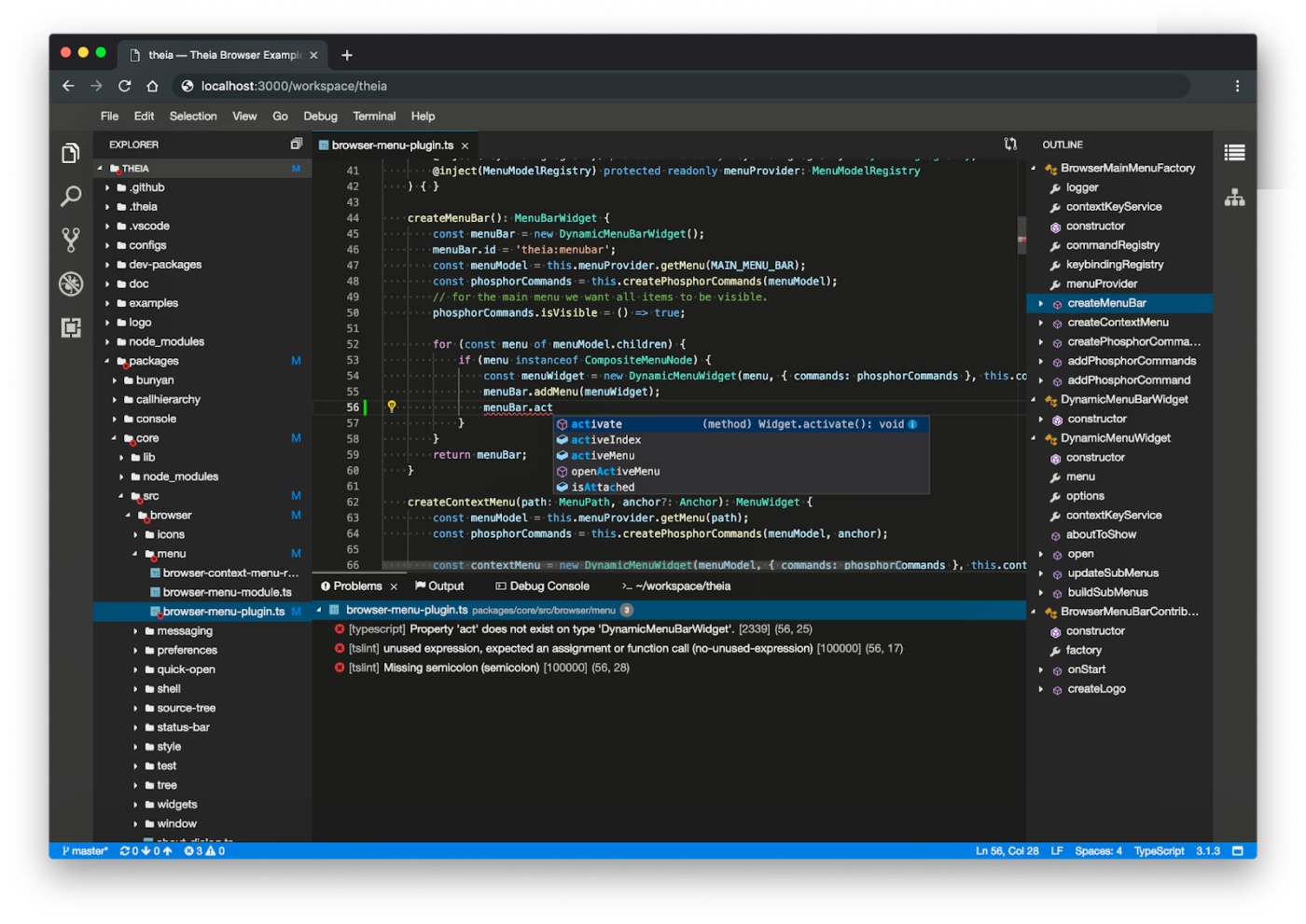
Eclipse is a free, open-source integrated development environment (IDE) that supports multiple programming languages. It offers robust features and an extensive plugin ecosystem, allowing you to tailor the IDE to your specific needs.
You can leverage Eclipse’s built-in debugger to step through your code and identify issues, enhancing your development process.
Eclipse best features
- Access multiple programming languages like C/C++, Python, Ruby, and more
- Identify and fix issues in your code with robust debugging tools
- Improve your code structure without changing its behavior
Eclipse limitations
- It consumes a lot of memory and slows down the system
- The debugging process is complicated and time-consuming
Eclipse pricing
- Free forever
Eclipse ratings and reviews
- G2: 4.3/5 (2900+ reviews)
- Capterra: 4.6/5 (270+ reviews)
Here’s what a G2 review has to say about Eclipse:
8. Kubernetes (Best for implementing microservices architectures)
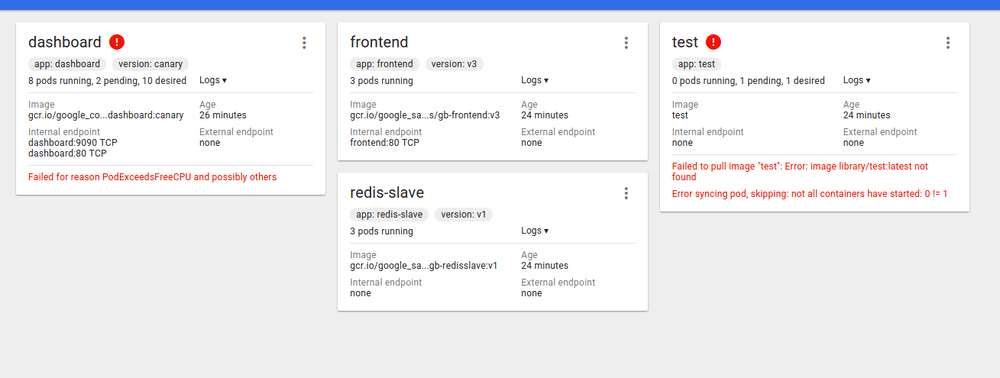
Kubernetes automates the deployment, scaling, and management of containerized applications. It’s known for orchestrating complex application architectures, ensuring your services run reliably.
With Kubernetes, you might deploy a microservices-based application, and it will ensure each service scales appropriately and remains available.
Kubernetes best features
- Restart or replace failed containers automatically to maintain service availability
- Distribute network traffic efficiently to ensure stable deployments
- Mount and manage storage systems as needed by your applications
Kubernetes limitations
- Mastering Kubernetes concepts and operations demands time and effort
- Running Kubernetes clusters can consume substantial system resources
Kubernetes pricing
- Custom pricing
Kubernetes ratings and reviews
- G2: 4.6/5 (130+ reviews)
- Capterra: Not enough reviews
💡 Pro Tip: Ever wondered how AI can supercharge your software development process? Here’s how to use AI in software development and leverage its benefits:
- Automate bug identification, code smell detection, and security checks—saving time and boosting efficiency 🛠️
- Transform your codebase into clear, organized API docs, reducing manual effort and improving consistency 📄
- Use machine learning to pinpoint bugs faster, even in complex codebases, making debugging a breeze 🐞
- Identify code improvement opportunities, optimizing readability and performance with ease ✨
- Analyze outdated codebases, detect vulnerabilities, and suggest fixes to keep legacy systems functional 🔧
9. Postman (Best for designing and testing RESTful APIs)
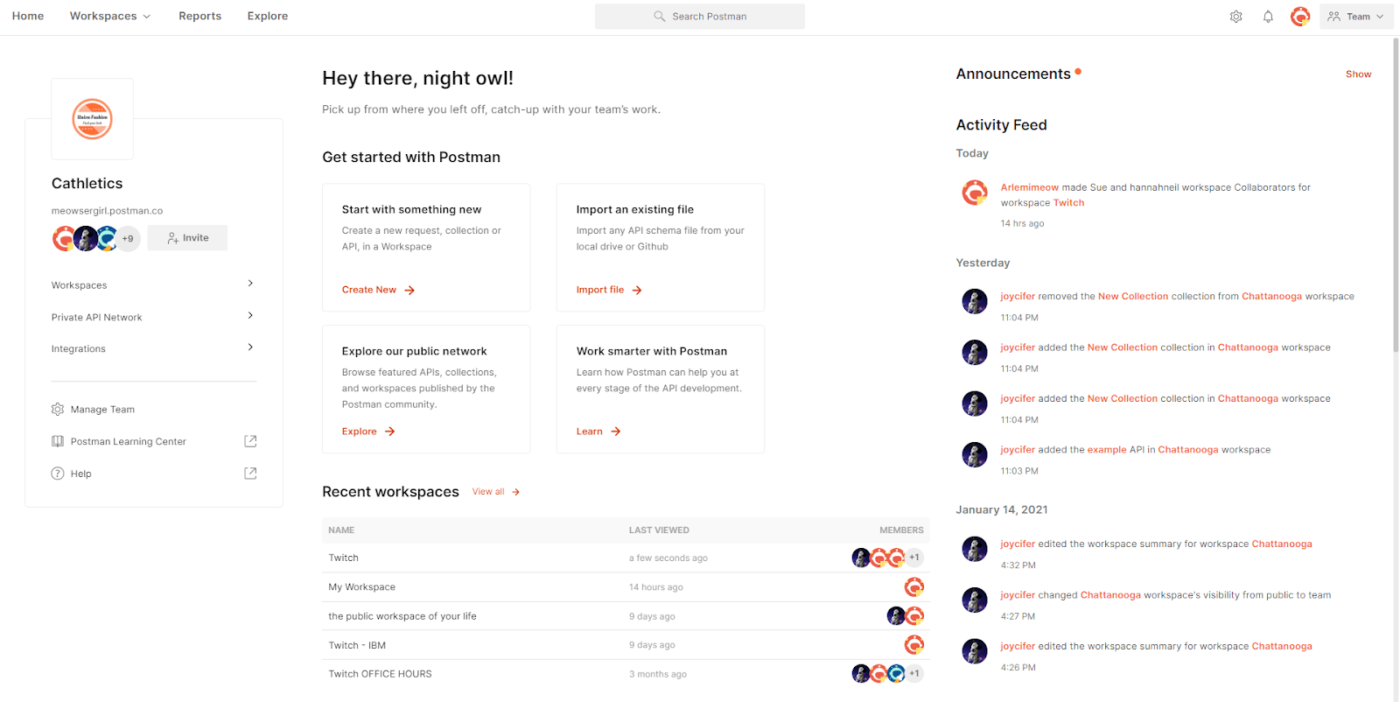
For designing, testing, and documenting RESTful APIs efficiently, choose Postman. It is a collaborative platform for API development with a user-friendly interface and comprehensive feature set.
With Postman, you can create and send HTTP requests, inspect responses, and organize your API workflows as well.
Postman best features
- Define environments with variables to streamline testing across different setups
- Write tests to automate API validation and ensure reliability
- Simulate API endpoints to test client applications without actual server implementation
Postman limitations
- It is designed for RESTful APIs, and may not be well-suited for other APIs
- Postman lacks built-in load testing or performance testing capabilities
Postman pricing
- Free forever
- Basic: $19/month per user
- Professional: $39/month per user
- Enterprise: Custom pricing
Postman ratings and reviews
- G2: 4.6/5 (1200+ reviews)
- Capterra: 4.7/5 (490+ reviews)
10. Visual Studio Code (Best for writing code in multiple programming languages)
Visual Studio Code (VS Code) is a popular, free code editor developed by Microsoft. It supports many programming languages and offers helpful features like syntax highlighting and code completion.
You can write Python code easily in VS Code and utilize its integrated debugger to identify and fix issues efficiently.
Visual Studio Code best features
- Benefit from code completion and real-time error detection
- Access a built-in terminal to run commands without leaving the editor
- Manage version control operations directly within the editor
Visual Studio Code limitations
- Most core features like syntax highlighting and extensive community support are provided through extensions
- Installing several extensions can slow down VS Code on less powerful systems
Visual Studio Code pricing
- Free forever
Visual Studio Code ratings and reviews
- G2: 4.7/5 (2300+ reviews)
- Capterra: 4.7/5 (490+ reviews)
Here’s what a G2 review has to say about Visual Studio Code:
11. IntelliJ IDEA (Best for developing Java and Kotlin applications)
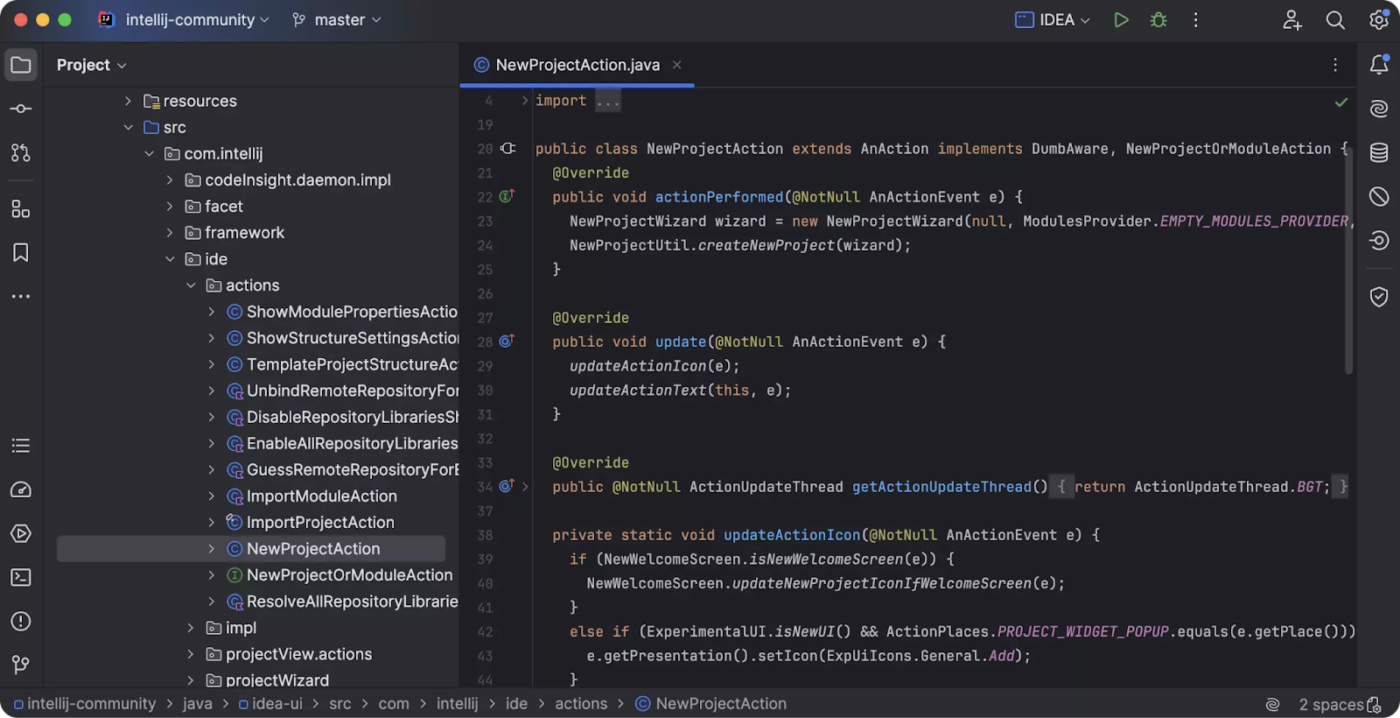
IntelliJ IDEA is a powerful integrated development environment (IDE) primarily designed for Java and Kotlin development. It offers intelligent code assistance and developer-friendly features.
You can leverage IntelliJ IDEA’s smart code completion which suggests relevant code snippets as you type, streamlining your coding process.
IntelliJ IDEA best features
- Receive context-aware suggestions to speed up coding
- Access version control, terminal, and database tools within the IDE
- Work seamlessly with popular frameworks like Spring and Hibernate
IntelliJ IDEA limitations
- It is known for its high resource consumption, particularly CPU and RAM
- Users have reported its sluggish performance on older, causing a frustrating experience
IntelliJ IDEA pricing
- IntelliJ IDEA Ultimate: $59.90/month per user
- All Products Pack: $77.90/month per user
- dotUltimate: $46.90/month per user
IntelliJ IDEA ratings and reviews
- G2: 4.6/5 (2100+ reviews)
- Capterra: 4.7/5 (1200+ reviews)
💡 Pro Tip: Curious about mastering software project management? Here are key processes to ensure your project’s success:
- Map out goals, milestones, and deliverables from the start 📋
- Allocate time, costs, and resources to avoid surprises later ⏳
- Create timelines that balance deadlines and team capacity 🗓️
- Use tools to keep communication flowing across teams 🤝
- Track progress to address issues and stay on course 📊
12. Slack (Best for centralizing project-related discussions)
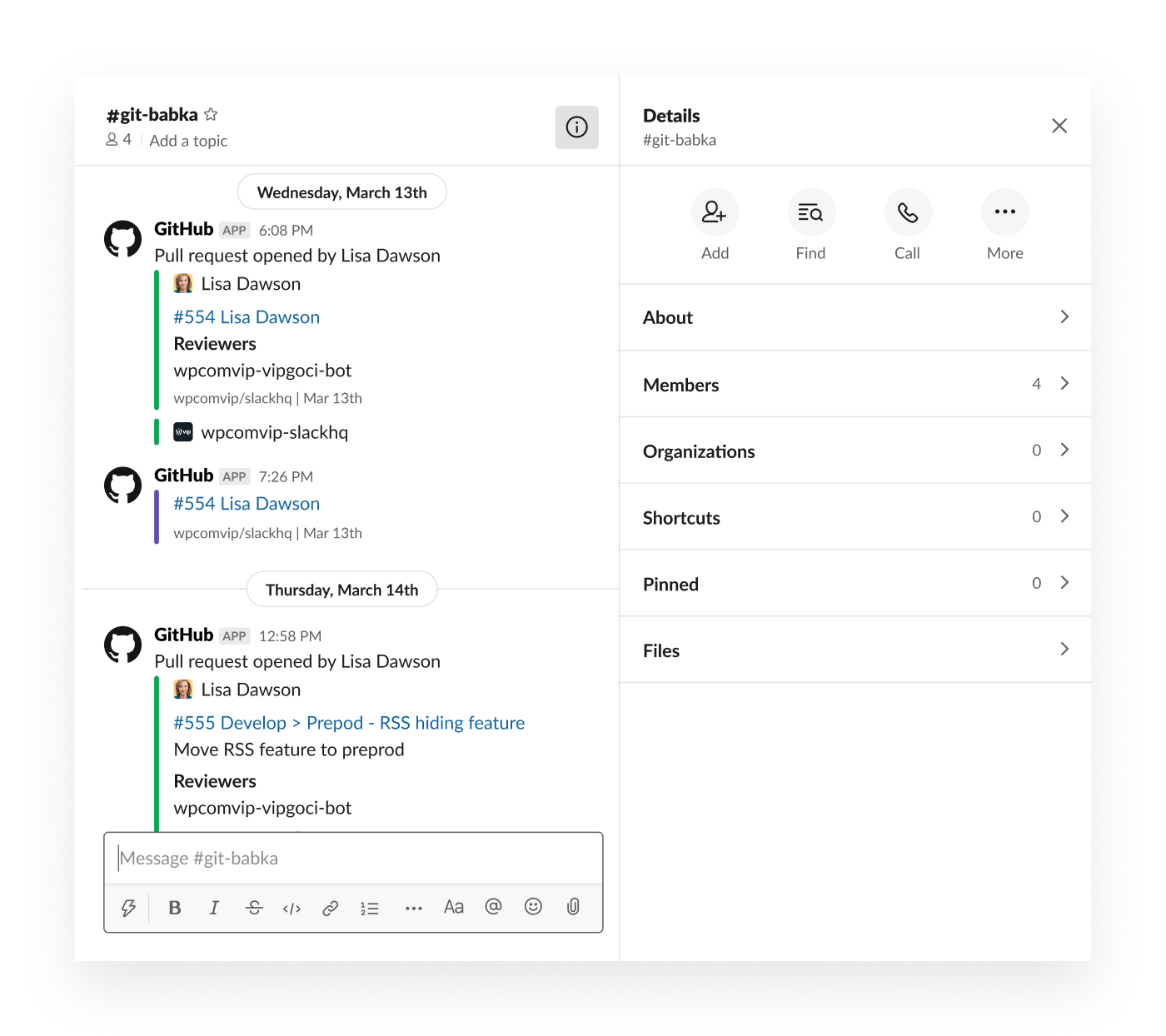
Slack is designed to streamline team communication with real-time messaging, file sharing, and integration capabilities. With Slack, you can create channels for different projects or teams, facilitating organized discussions.
For example, you might set up a channel for a specific project, allowing all related conversations and files to be centralized, and enhancing team collaboration.
📮ClickUp Insight: Over 60% of a team’s time is spent searching for context, information, and action items.
According to research by ClickUp, teams lose precious hours jumping between different tools. To prevent broken communication, integrate messaging into your workflows with a centralized platform that unites project management, collaboration, and communication.
Try ClickUp, the everything app for work.
Slack best features
- Organize conversations by topics, projects, or teams for focused discussions
- Easily share documents, images, and other files within conversations
- Connect with over 2,400 apps to enhance functionality
Slack limitations
- Free accounts have access to only the most recent 90 days of messages
- Slack lacks project management and software development functionalities
Slack pricing
- Free forever
- Pro: $8.75/month per user
- Business+: $15/month per user
- Enterprise Grid: Custom pricing
Slack ratings and reviews
- G2: 4.5/5 (33800+ reviews)
- Capterra: 4.7/5 (23500+ reviews)
13. Trello (Best for streamlined task management)
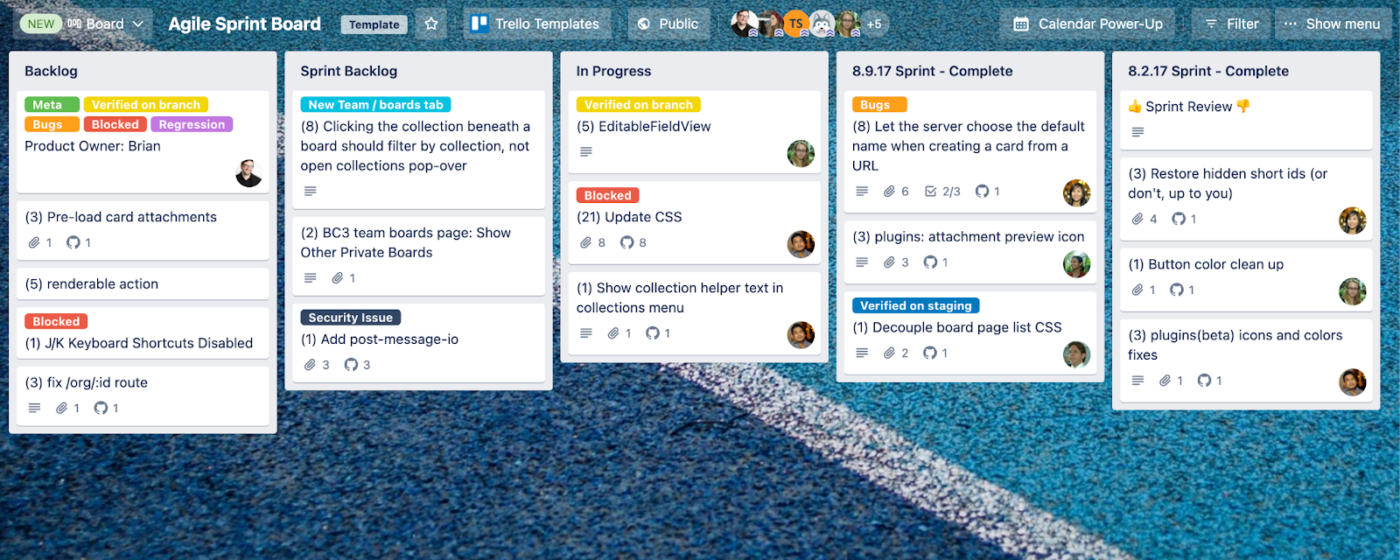
Trello is one of the most popular project management tools with an intuitive drag-and-drop interface that helps you organize development tasks. It lets you create a board for a project, add lists to represent stages and populate them with cards for individual tasks.
For instance, you might have lists like “To Do,” “In Progress,” and “Done,” moving task cards through these stages as work progresses in a software programming project.
Trello best features
- Assign tasks, leave comments, and @mention teammates easily
- Categorize tasks and break down complex projects into smaller steps
- Gain insights into project progress through customizable reports
Trello limitations
- Trello doesn’t offer features for coding and bug tracking
- Reporting and analytics are not on par with advanced software development tools
Trello pricing
- Free forever
- Standard: $5/month per user
- Premium: $10/month per user
- Enterprise: $17.50/month per user (billed annually)
Trello ratings and reviews
- G2: 4.4/5 (13600+ reviews)
- Capterra: 4.5/5 (23300+ reviews)
Let’s check out what a Capterra review has to say about Trello:
14. Zapier (Best for automating repetitive tasks)
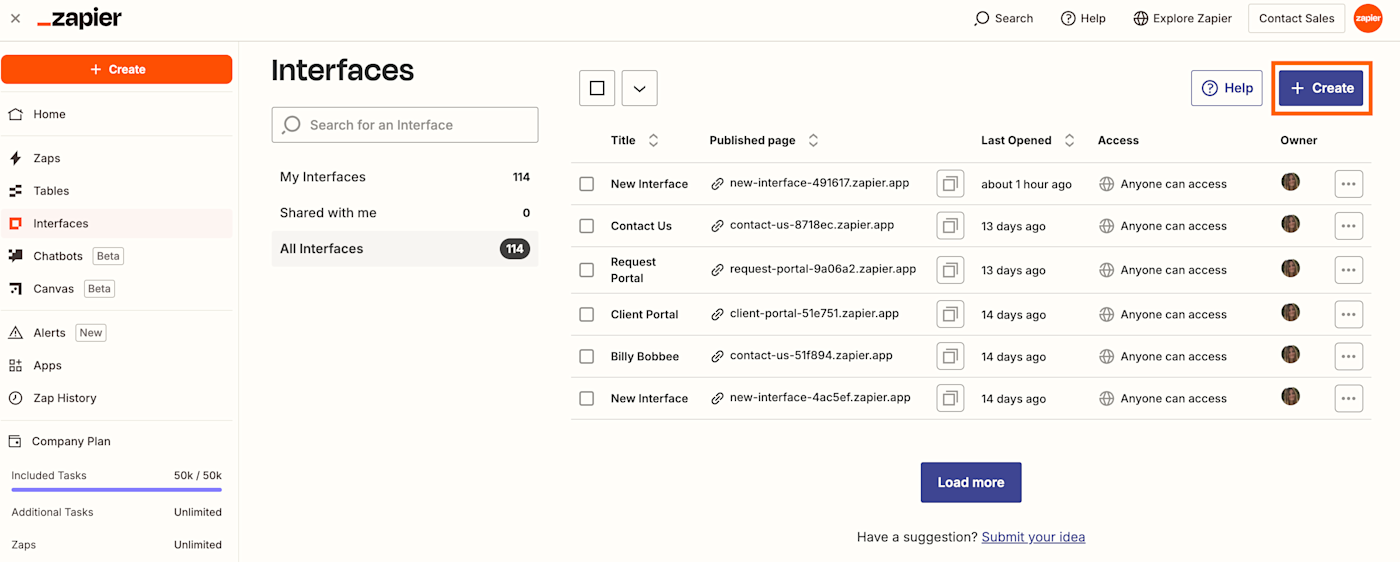
Zapier is an automation tool that connects your favorite apps, streamlining repetitive tasks. By setting up “Zaps,” you can automate workflows without coding.
For instance, when you receive a new email attachment, Zapier can automatically save it to your cloud storage, enhancing productivity by reducing manual effort.
Zapier best features
- Integrate over 5,000 apps, including Slack, Google Workspace, and Trello.
- Review and troubleshoot your automations with a comprehensive log of task executions
- Set up advanced workflows with paths that diverge based on specific criteria
Zapier limitations
- Zapier’s cost increases with the number of automations and zaps
- Keeping your database accurate and current is complex in Zapier
Zapier pricing
- Free forever
- Professional: $19.99/month per user
- Team: $69/month per user
- Enterprise: Custom pricing
Zapier ratings and reviews
- G2: 4.5/5 (1300+ reviews)
- Capterra: 4.7/5 (2900+ reviews)
15. Dreamweaver (Best for designing visually appealing websites)
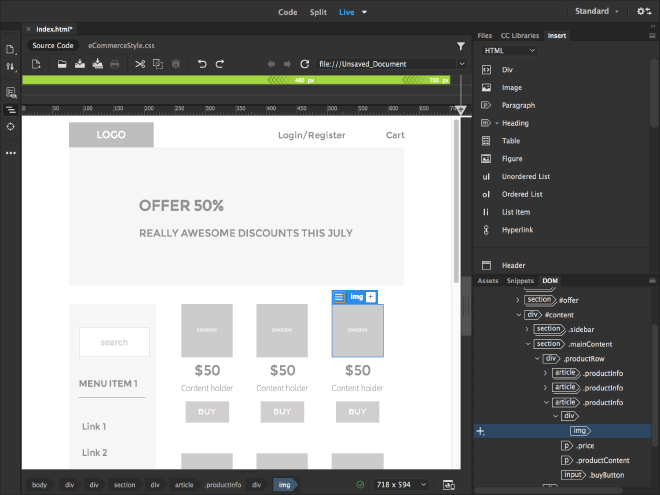
Adobe Dreamweaver combines a code editor with a visual design surface, allowing you to create and edit websites efficiently. Its live preview feature lets you see changes in real-time, ensuring your designs look as intended across devices.
When you adjust your site’s layout, Dreamweaver updates the display instantly, helping you maintain responsive designs and simplifying the development process.
Dreamweaver best features
- Write and edit code with syntax highlighting and code completion
- Design your website using a drag-and-drop interface without deep coding knowledge
- Create websites that adapt to various screen sizes and devices
Dreamweaver limitations
- It requires an Adobe Creative Cloud subscription, which might be costly for some users
- Dreamweaver can generate code that’s too large, affecting a website’s performance negatively
Dreamweaver pricing
- Available as part of the Adobe Creative Cloud subscription: $29.99/month
Dreamweaver ratings and reviews
- G2: 4.1/5 (2800+ reviews)
- Capterra: 4.5/5 (90+ reviews)
Here’s what a G2 review has to say about Dreamweaver:
16. Apache NetBeans (Best for enhancing your development workflow)
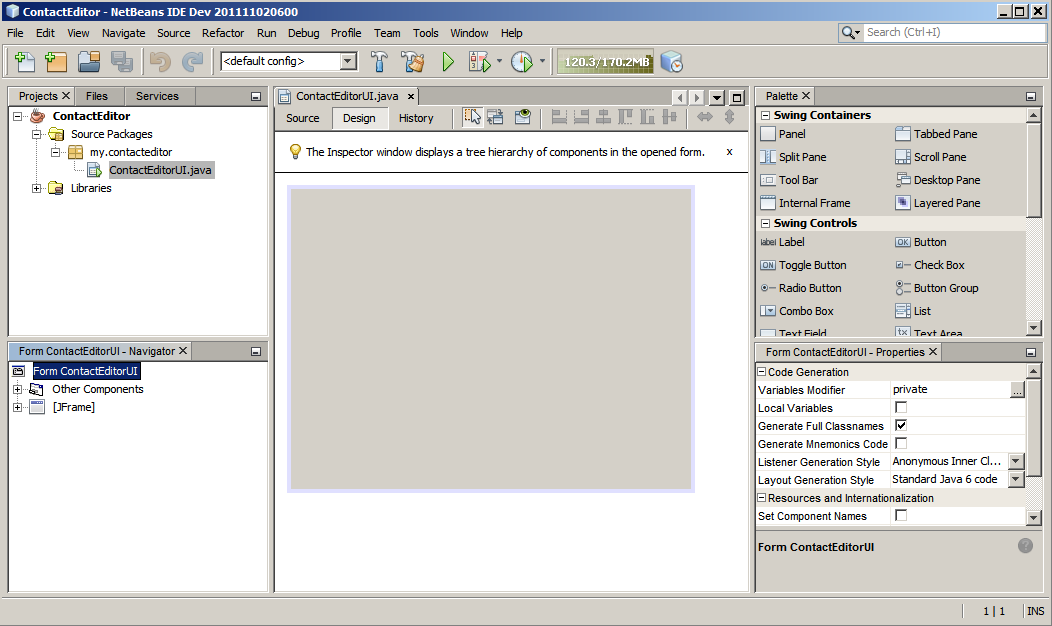
Apache NetBeans is an IDE that supports multiple programming languages, including Java, PHP, and HTML5. It offers a range of tools for software development teams to simplify the development process, such as code templates and project management features.
If you’re working on a Java application, NetBeans provides code suggestions and debugging tools to enhance your productivity.
Apache NetBeans best features
- Organize and manage your code files and resources efficiently
- Collaborate with team members using integrated version control systems like Git
- Run NetBeans on various operating systems, including Windows, macOS, and Linux
Apache NetBeans limitations
- The interface can feel outdated compared to other modern IDEs
- NetBeans can consume a lot of memory, especially when working on big projects
Apache NetBeans pricing
- Free forever
Apache NetBeans ratings and reviews
- G2: 4.1/5 (600+ reviews)
- Capterra: 4.3/5 (200+ reviews)
17. Codenvy (Best for collaborative coding platforms)
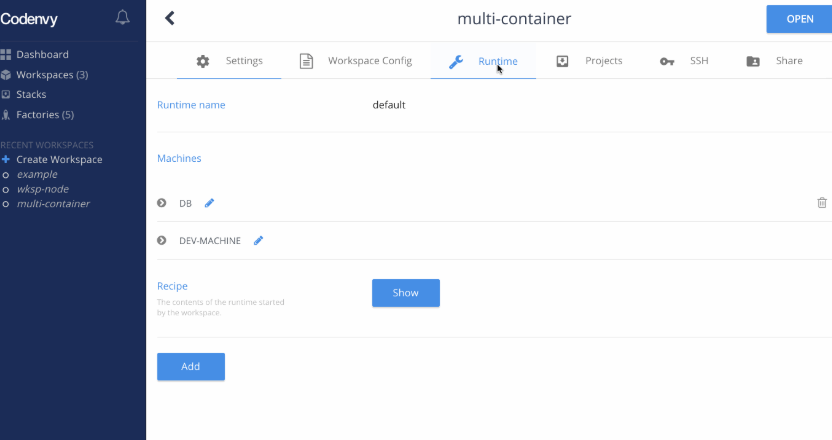
Codenvy is one of the best software development tools that allows you to code, build, and debug applications directly in your web browser. This means you can work from anywhere with an internet connection without installing anything on your local machine.
Its collaboration and integration features are great for remote teams or freelancers who need a portable and collaborative software development environment.
Codenvy best features
- Share projects and work together with your team in real time using software development tools
- Integrate with popular version control systems like Git and cloud platforms
- Customize your stack using Dockerfiles for consistency
Codenvy limitations
- The docker instances may terminate after about 10 minutes of inactivity
- Software developers have reported that it has limited customization options
Codenvy pricing
- Free forever
- Enterprise license required for more than 3 users
Codenvy ratings and reviews
- G2: 4.2/5 (60+ reviews)
- Capterra: 4.4/5 (460+ reviews)
➡️ Read More: Best Automation QA Testing Software Tools
18. Cloud9 (Best for working on collaborative development environments)
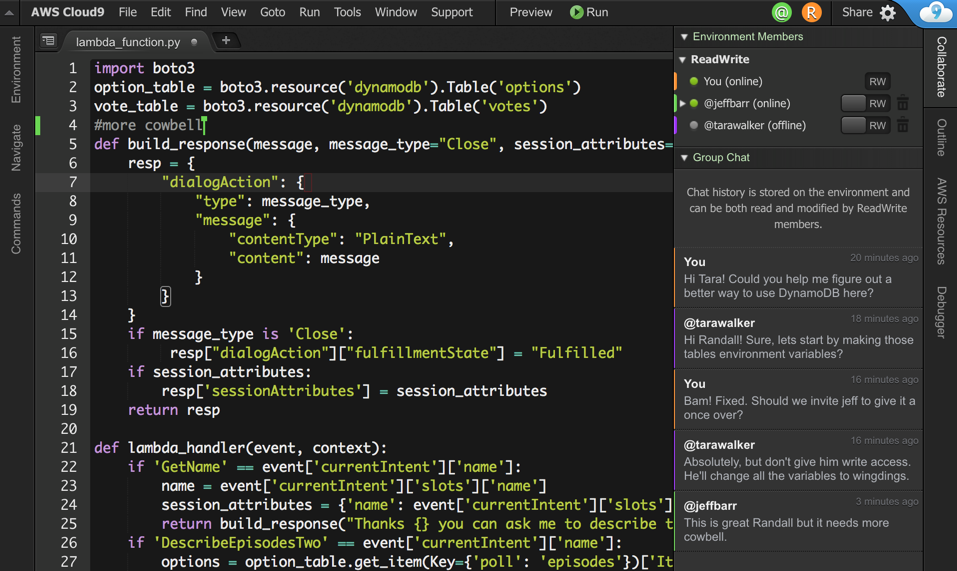
Cloud9 is Amazon’s cloud-based IDE that allows you to write, run, and debug software development code directly in your web browser. Software developers can collaborate and work on the same codebase simultaneously.
If you and your team are developing a Node.js application, Cloud9 provides a pre-configured environment, allowing you to start coding immediately without local setup hassles.
Cloud 9 best features
- Identify and fix issues efficiently with built-in debugging tools
- Write code better using code completion and syntax highlighting features
- Integrate with other AWS services, such as Amazon S3, Lambda, and EC2
Cloud 9 limitations
- Software developers have noted occasional latency when working on large projects
- Some users find fewer customization options compared to traditional desktop IDEs
Cloud 9 pricing
- Custom pricing
Cloud 9 ratings and reviews
- G2: 4.3/5 (270+ reviews)
- Capterra: Not enough reviews
Special mentions
In addition to the different software development tools mentioned above, here are a few more worth noting:
- Bitbucket: Host code, review changes, and collaborate with teams effortlessly
- Selenium: Automate browser testing for seamless application functionality
- GitLab: Integrate CI/CD pipelines and improve deployment efficiency
Streamline Your Software Development Workflows with ClickUp!
Effective software development hinges on streamlined workflows, clear communication, and efficient collaboration. For coders, developers, freelancers, and remote teams, the right tools are paramount when it comes to delivering high-quality products on time.
The 18 popular software development tools on this list make it easier to streamline coding, bug tracking, and team collaboration. These tools enhance efficiency, improve communication, and simplify complex workflows, helping teams focus on creating great software.
With ClickUp, you can take your development projects to new heights. Manage tasks, plan sprints, track bugs, and integrate with platforms like GitHub—all within one intuitive workspace. Its customizable views, automations, and real-time dashboards help ensure that every part of your workflow stays efficient and organized.
Sign up for ClickUp today and transform the way you manage your software projects! 📈






